Think plants look brown and dead in winter? There’s plenty of life still going on beneath the surface!
©2015 Chicago Botanic Garden and my.chicagobotanic.org
Think plants look brown and dead in winter? There’s plenty of life still going on beneath the surface!
©2015 Chicago Botanic Garden and my.chicagobotanic.org
If you’ve been around Chicago in the past month, you’ve probably noticed the sort of weather we’ve been having.
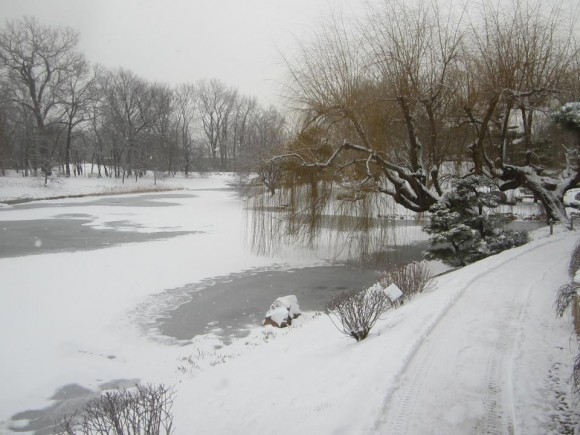
You may even be bitterly cursing the snow and hoping winter will end, cheering this week’s thaw and higher temperatures. What you might not know is that all this snow has a number of benefits that will help your garden and landscape later this spring.

Snow is a great insulator!
As winter presses on, the ground freezes deeper and deeper. This prolonged cold soil can damage roots over time. Snow helps create a blanket that reduces freezing of the soil. Warmer soil keeps microbes more active, which helps break down any plant waste that is in the soil, releasing nutrients. As a result of this insulation, your plants will have a much better start in spring!
Snow brings an important nutrient into the soil: nitrogen.
There are not many ways for nitrogen to enter the soil. While planting legumes and adding fertilizer are the most common ways we add nitrogen to soil, the weather provides nitrogen as well! Nitrogen is abundant in the atmosphere and is most easily collected by falling snow. As the snow melts, it deposits the nitrogen into the ground. (Apple trees and other plants benefit greatly from nitrogen deposited by snow.) When the ground is soft, plowing the snow into the soil will give the greatest benefit. Snow is sometimes called the poor man’s fertilizer.
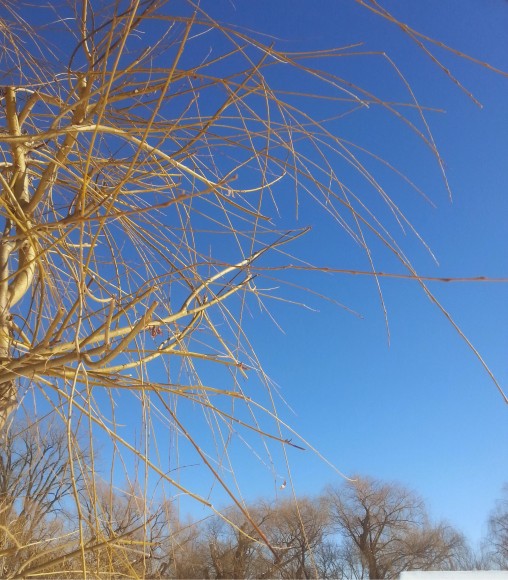
Don’t forget, snow is water!
When snow melts, it provides moisture for evergreen trees and shrubs. This moisture helps keep these plants happy and healthy throughout the winter. You won’t see damage right away, but a few years of snow-free winters can cause health problems in your trees.
Last but not least, snow can be very attractive in a landscape.
Snow makes plants with ornamental fruit, flowers, and bark stand out in the winter landscape. Plants like holly, ornamental grasses, euonymus, crabapples, roses, birches, ghost bramble, striped maple, dogwoods, willows, hazels, winter hazels, and witch hazels are only a few of many very attractive plants for a winter landscape. Dogwoods and willow varieties often will have young growth that is orange, yellow, or red. These same colors appear in the fruit of euonymus, crabapples, roses, and holly. Look for varieties that will complement your landscape.
If you find that snow is weighing down branches in your landscape and disfiguring the appearance of your shrubs or young trees, brush off the snow regularly and prune in the spring to remove any dead or broken branches.
When the snow melts, check your trees and shrubs for damage near the trunk of the plant. Rodents, particularly voles, take advantage of winter snow cover and feed more aggressively on tender bark of young trees. If your lawn has developed paths of dead grass from these garden pests, rake affected areas of the lawn, apply a light application of fertilizer and seed the affected areas if damage is severe.
While many of us are hoping for an end to this winter, this abundance of snow is promising us a great spring!
©2014 Chicago Botanic Garden and my.chicagobotanic.org
My daughters love fresh grapefruit—and birds. So we decided to keep the rind and make a bird feeder. This is a fun, easy project.
To make a grapefruit bird feeder, you will need the following:
First, eat the grapefruit and drain the remaining liquid. Then, use the skewer or knife to poke three holes in the grapefruit. They should be about half an inch from the top edge and spaced evenly around the circumference. (Some people do this with four strings, but I find that using three strings makes it easier to balance the fruit.)
Push a piece of yarn through each hole and tie it off.
Hold the grapefruit up by all three strings and adjust the length of the strands so the fruit is not tipping. When it is balanced, knot the strings together about 4 or 5 inches from the top. (The ends will probably be uneven, and that is all right.) Make a loop knot with those top ends, so you will be able to hang it from a branch.
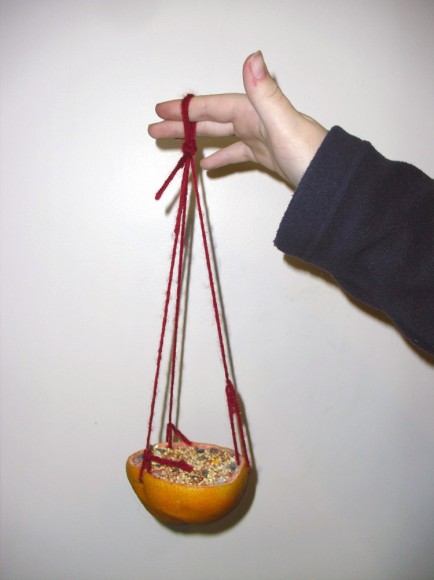
Finally, fill the fruit with birdseed and hang it outside for your feathered friends to enjoy. If you like, you can add a little suet, but you may find it doesn’t stick well to the wet fruit. Here in the Chicago area, you’ll probably find that most of your winter guests are black-capped chickadees, nuthatches, dark-eyed juncos, common redpolls, and downy or hoary woodpeckers, which balance their primary diet of insects and grubs with bits of suet and sunflower seeds.
One more thing: Make sure it’s tied to the branch firmly so that your local (determined) squirrels — who will also find this bird feeder appealing — don’t knock it down.
Don’t worry if you don’t have any visitors the first few days after you’ve placed your feeder. It can take up to two weeks for birds to discover their new food source, but once they do, they tell all their friends in the neighborhood.
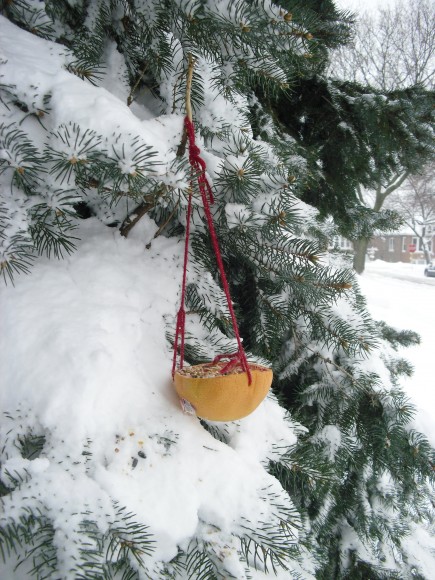
What is birdseed?
You probably know that if you plant birdseed, you won’t grow a bird. And there is no such thing as a birdseed plant. So what plants make birdseed? What we call “birdseed” most commonly comes from two sources: millet, which is a grass, and sunflower. Other seeds used to feed birds include thistle, safflower, cracked corn, and sorghum seed, which is also called milo. Some birds have a preference for certain kinds of seeds, so bird lovers stock their feeders with seeds to attract their favorite birds and keep them visiting the feeder.
After you hang your bird feeder, take some of the seed and plant it to see what grows. Maybe you can grow your own food for the birds this year!
©2014 Chicago Botanic Garden and my.chicagobotanic.org
Brrrr, it’s cold outside!
OK, it’s winter. It’s cold. No flowers are blooming. So…is it time to take a break from photography? Heck no! It’s time to get out the warm clothes and get shots that you can get ONLY in winter.
First let’s talk about gear. With nature photography, one spends a lot of time standing still, so you can’t depend on moving around to keep you warm. To get those rare, really special shots, you have to take a LOT of shots…and that takes time. So, it’s important to be comfortable for many hours in the cold.
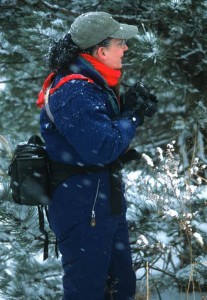
Let’s start at the top and work our way down. Some of these are obvious, some are not, but I’m surprised at how often I see nature photographers who are so anxious to get out of the cold that they miss many good shots.
Head: I like to wear a hat and cover my ears. On a really cold day, I’ll put my hood up as well. A scarf around my neck really helps keep the draft out.
Body: I make sure to have several thin layers. Thin layers work better to keep me warm and also allow for easier movement than one thick, heavy coat. Typically I’ll wear a t-shirt or long underwear, a turtleneck shirt with elastic cuffs, a fleece pullover, a vest, and a windproof coat.
Legs: I wear thick running tights and winter pants. When it’s really cold, I’ll pull out the snow pants to wear over these, too.
Feet: I wear thick wool socks and winter boots. I make sure my boots are loose enough to allow circulation, but not so loose that walking becomes a chore.
And finally…hands: Sadly, this is where I often get cold first. I like to have gloves that allow for easy maneuverability and control of my camera settings, but that are still warm enough for comfort. I wear glove liners and medium-weight gloves with wind blocking. I also put chemical-based, shake-and-heat hand-warmers into my gloves. This works for me for about an hour in sub-20 degree weather, and longer at warmer temperatures. I’ve talked to some photographers who say they like the mittens that flip open. Sometimes I will choose to sacrifice dexterity for warmth and put on thicker gloves. On those days, I may opt to have my camera on autofocus instead of on manual focus, which I prefer. There are some choices and compromises that you will have to make for comfort.
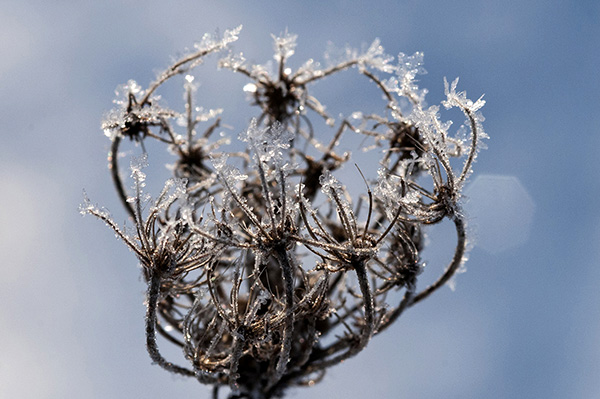
One of the most important things you can do to keep warm is to be vigilant about having as little skin exposed as possible by closing all the gaps. Make sure your socks cover the gap to your pants, and that your coat sleeves cover your wrists. I have a coat that has adjustable wrist openings so I can cinch them tight to my gloves.
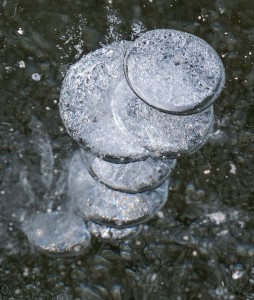
Now, you are suited up and ready to go. So, now what? One amazing thing to photograph is early-morning frost. When freezing nights are cloudless and wind-free, you can often find beautiful frost gracing trees and grass the next morning. These formations are magical, and are only around for a short time until the sun melts them. Also, when the streams or lakes freeze up, often you can find leaves and bubbles suspended in the ice, creating lovely frozen compositions.
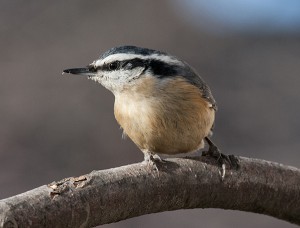
Another treat is seeing the rare birds that come to the Garden only in winter. One fun winter visitor that has invaded the Garden this year is the cute, red-breasted nuthatch. They are bold little birds, and you can sometimes see them by the feeders in the Enabling Garden.
You can fight winter, or you can embrace the season, and photograph those rare moments only seen on the coldest of days…made all the more rewarding for the bit of extra effort it takes to get them.
©2013 Chicago Botanic Garden and my.chicagobotanic.org
When a coyote pirouettes in the snow, you start to wonder. Where was it going? And what made it turn?
After a big snow, I love looking for wildlife tracks and the stories they tell. The paw prints and other tracks in the snow are among the small wonders of winter.
In a recent blog, we talked about finding awe on winter walks—turning attention outside yourself for emotional well-being. By following animal tracks, you lose yourself in a different world and take a fresh look at the nature that surrounds you. You can do so in your neighborhood or at places including the Chicago Botanic Garden, where I’m director of youth education.
One winter, after a snowstorm, I decided to look for evidence of wildlife near the Garden’s Regenstein Learning Campus. My first sighting was the tracks of at least one coyote running through the snow.
The individual track was not a clear footprint, but it was the right general shape and size to be a coyote.
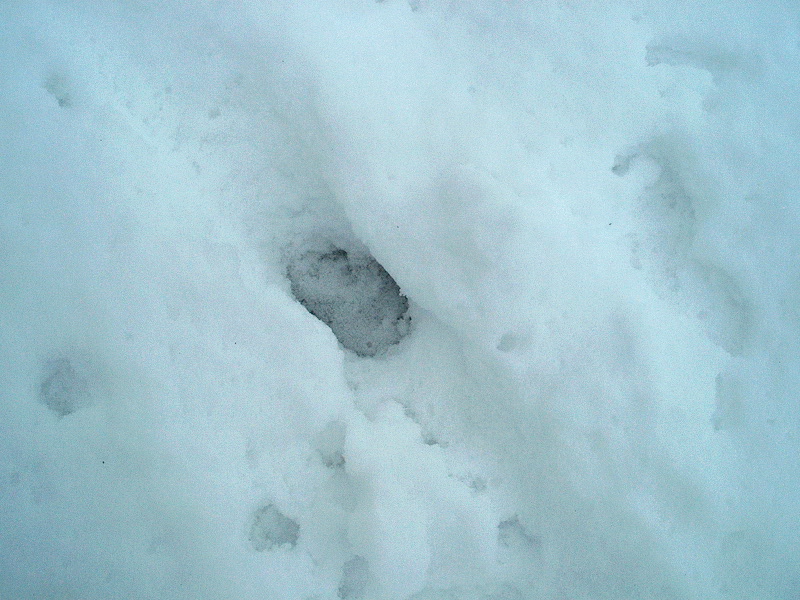
The tracks formed a few paths across the Campus.
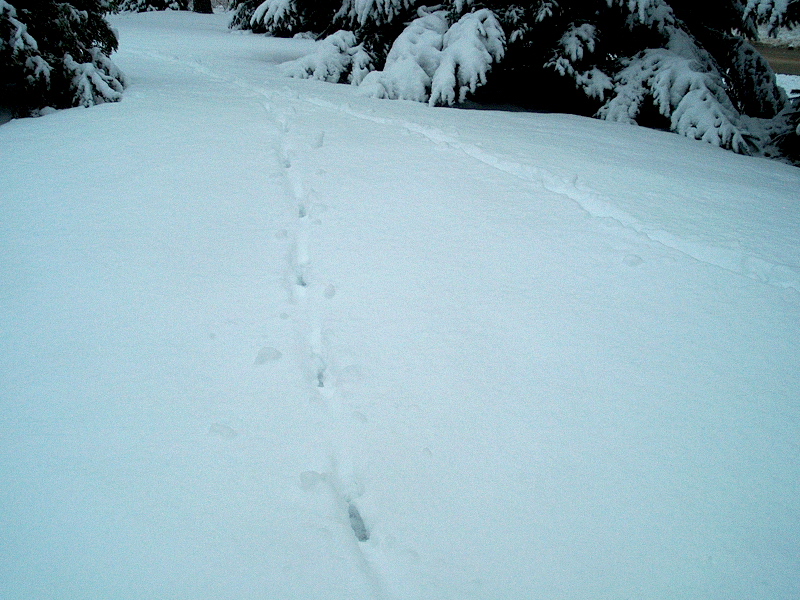
The tracks did not follow the paths that people walk, but instead ran closer to trees. This makes sense for an animal that is trying to stay hidden from other animals. I also found a spot where the coyote seemed to run up, do a little turnaround, and take off in another direction.
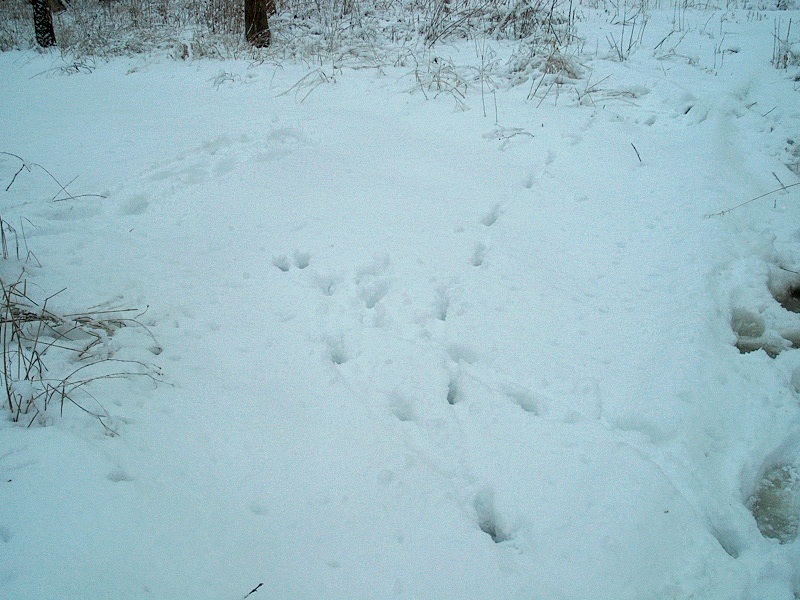
This isn’t the clearest picture, but you can still see that the coyote came from the wooded area toward the front of the picture. Then it turned around and sank down on its front paws, right where you see two clear side-by-side holes in the snow. It turned and ran to the right of the picture frame. You can imagine a spirited puppy, running excitedly as it plays in the new snow and leaves tracks like these. Was the coyote playing? Hunting? Running away? If you’re walking with someone, especially kids, it’s fun to come up with a story.
I was also hoping to find evidence of animals interacting. The closest thing I found was this set of rabbit tracks.
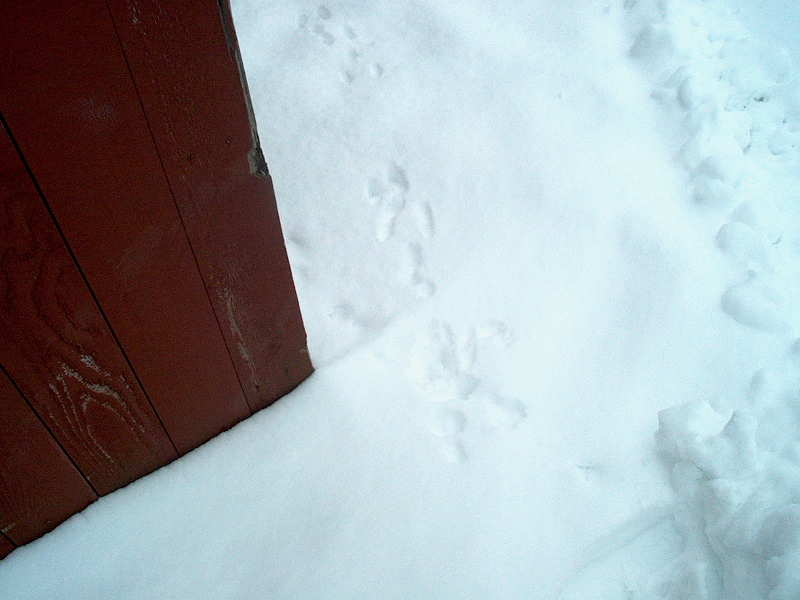
Here, the rabbit hopped to the corner of the building, stopped, and then turned around and went back the way it came. Did it possibly see or smell the coyotes that were running around and decide to go back to hiding?
I also spotted squirrel, bird, and mouse tracks. And then I found these strange marks in the snow.
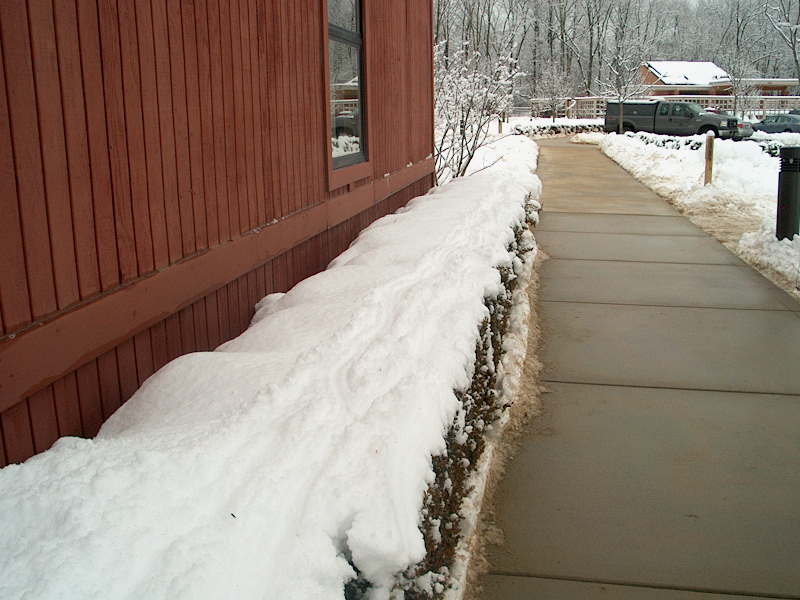
What could these strange lines be? “It’s elementary, Mr. Watson!” These “fingerprints” were left by elementary school students as they dragged their hands along the snow.
Here are some tips on how to look for wildlife stories:
And if you don’t spot any animal tracks, no worries. You got in a walk and fresh air and took in the beauty of a winter wonderland.
©2013 Chicago Botanic Garden and my.chicagobotanic.org